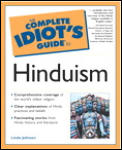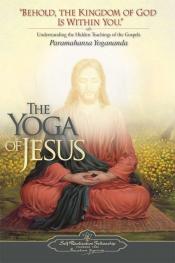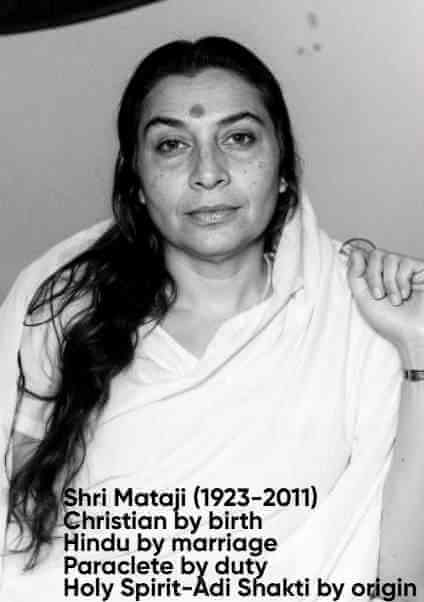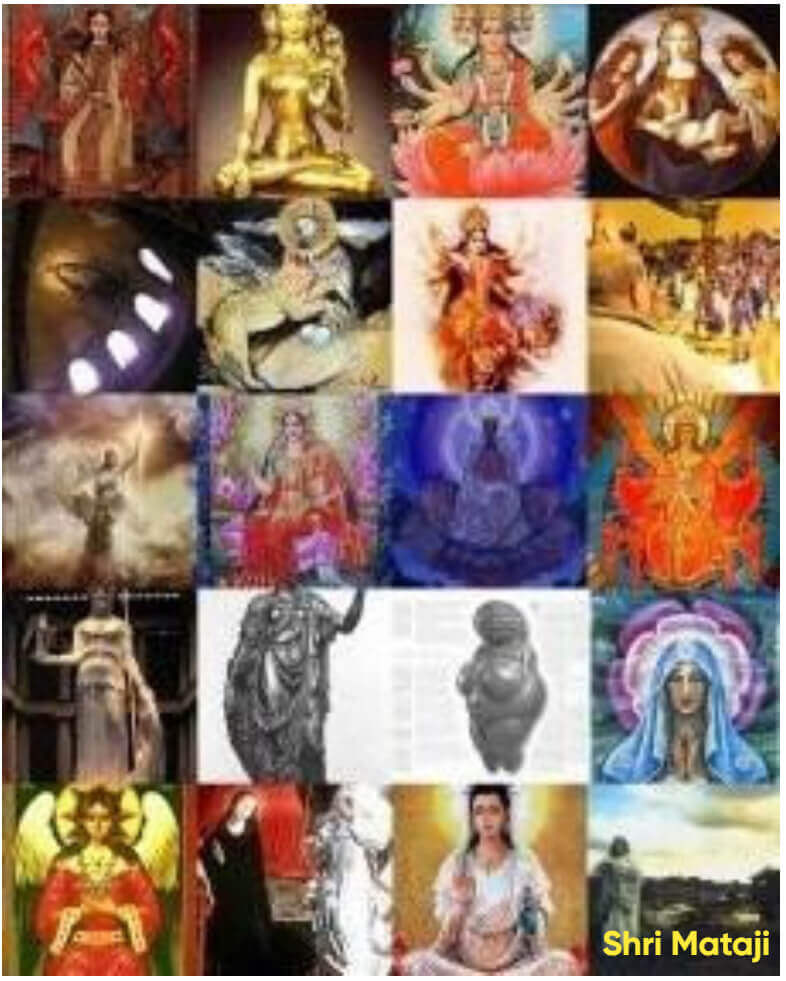Sages Who Were Already Ancient to Its Composers Living in 4000 B.C.E.
Hinduism's staggering antiquity is affirmed by the Vedas themselves, which honor sages who were already ancient to their composers living in 4000 B.C.E. This article, excerpted from Linda Johnsen's The Complete Idiot's Guide to Hinduism,
explores the timeless nature of Sanatana Dharma—a tradition not founded by any prophet, but revealed through cosmic insight and inner realization. The Indus-Saraswati civilization, with its advanced cities and goddess worship dating back 10,000 years, echoes the eternal truths of the Divine Feminine. Shri Mataji's teachings on Kundalini and Self-Realization confirm that this Light of God has always dwelled within. Hinduism is not merely old—it is the living memory of the universe's sacred origin.
Abstract
Hinduism, often described as the eternal religion (Sanatana Dharma), claims a timeless origin, with its foundational truths rooted in the very fabric of reality. The Vedic texts, among the oldest known spiritual writings, reference sages who were considered ancient even by the composers living around 4000 B.C.E. This paper explores the historical, archaeological, and textual evidence supporting the antiquity of Hinduism, focusing on the sages mentioned in the Rigveda and other ancient texts. It examines the cultural and spiritual sophistication of the Indus-Saraswati civilization, challenges Western chronological assumptions, and highlights the enduring influence of these ancient sages on global spiritual traditions. By synthesizing archaeological findings, textual analysis, and comparative religious studies, this paper argues that Hinduism's roots extend far beyond conventional timelines, potentially tracing back to the end of the last Ice Age.
Introduction
Hinduism, unlike other major world religions, does not attribute its origins to a single founder or prophet. Instead, it is described as eternal, with truths inherent in the nature of reality itself (Johnsen, 2001). The Rigveda, one of the oldest extant texts, composed around 4000 B.C.E. or earlier based on astronomical references, acknowledges sages (rishis) who were already ancient to its composers (Johnsen, 2001). These sages, revered as seers of divine truths, are central to the Vedic tradition, which forms the bedrock of Hinduism. This paper investigates the identity and significance of these sages, the archaeological evidence of the Indus-Saraswati civilization, and the implications of their antiquity for understanding the origins of Hinduism and its global influence.
The Antiquity of Vedic Sages
The Rigveda, the earliest of the four Vedas, is a collection of hymns attributed to various rishis, such as Vishvamitra, Vasishta, and Agastya, who are believed to have received divine revelations (shruti). The text's opening verses suggest that these sages were part of an already ancient tradition by 4000 B.C.E., implying a spiritual lineage predating the composition of the Rigveda (Johnsen, 2001). Some Hindu scholars propose that references to ice and snow in early texts may allude to the last Ice Age (c. 10,000 B.C.E.), suggesting a continuity of spiritual practice from that period (Johnsen, 2001).
Archaeological discoveries support this antiquity. Excavations in the Indus-Saraswati civilization (c. 2700-1900 B.C.E.) have uncovered goddess figurines resembling those worshipped in modern Hindu villages, indicating cultural continuity from at least 10,000 B.C.E. (Johnsen, 2001). The sophistication of these urban centers, with advanced urban planning and drainage systems, suggests a society capable of supporting complex spiritual traditions (Johnsen, 2001). The Puranas and Mahabharata further describe legendary cities and architects like Asura Maya, aligning with archaeological findings of planned cities like Harappa and Mohenjo-Daro (Johnsen, 2001).
Challenging Western Chronological Assumptions
Western scholarship, notably by Frederick Max Muller, initially dated the Rigveda to 1200-1000 B.C.E., based on biblical chronologies assuming a world creation in 4004 B.C.E. (Johnsen, 2001). This dating conflicted with astronomical references in the Rigveda, such as planetary positions corresponding to 3500-4000 B.C.E. (Johnsen, 2001). Muller's framework led to the Aryan Invasion Theory, which posited that Vedic culture was introduced by Indo-European invaders around 1500 B.C.E., displacing indigenous Dravidians (Johnsen, 2001). However, this theory lacks support in Hindu texts, which do not record such an invasion, and is contradicted by archaeological evidence showing cultural continuity in the Indus-Saraswati region (Feuerstein et al., 1995).
Later in life, Muller acknowledged the possibility of a much earlier date for the Rigveda, stating, Whatever may be the date of the Vedic hymns, whether 1500 or 15,000 B.C., they have their own unique place
(Johnsen, 2001). This admission, coupled with modern archaeological findings, has prompted a reevaluation of Indian chronology. Scholars like Feuerstein, Kak, and Frawley (1995) argue that the Vedic tradition predates the Indus-Saraswati civilization, potentially originating in a pre-urban spiritual culture.
Cosmological and Temporal Perspectives
Hinduism's cosmological framework, as articulated by figures like Swami Veda Bharati, emphasizes vast time scales that dwarf Western conceptions. A single day and night of Brahma, the creator god, is said to span 8.64 billion years, with Vishnu and Shiva's lifespans extending to even greater magnitudes (Johnsen, 2001). This cyclical view of time, encompassing yugas (epochs) and kalpas (cosmic cycles), underscores the belief in an eternal religion predating the universe itself. Such a perspective aligns with the notion that the sages of 4000 B.C.E. were inheritors of an ancient oral tradition, preserved through meticulous memorization techniques.
Global Influence of Vedic Sages
The spiritual insights of Vedic sages have parallels in mystical traditions worldwide, including Kabbalah, Sufism, and Christian Gnosticism (Johnsen, 2001). Scholars like Al-Biruni and Aldous Huxley have noted striking similarities between Hindu metaphysics and these traditions, suggesting a diffusion of ideas from India to the Near East (Johnsen, 2001). Archaeological evidence, such as a vase near Baghdad indicating an Indian cult by 2500 B.C.E., supports the idea of India as a spiritual cradle (Yogananda, 2016). Historians like Will Durant and D.P. Singhal further affirm India's role as the mother of religion,
with its Vedic teachings influencing early civilizations in Mesopotamia and beyond (Yogananda, 2016).
Discussion
The sages referenced in the Rigveda represent a spiritual lineage that may extend back to the end of the Ice Age, supported by archaeological evidence of goddess worship and urban sophistication in the Indus-Saraswati civilization. The misdating of Vedic texts by Western scholars, rooted in biblical chronologies, has obscured the antiquity of Hinduism, but modern findings challenge these assumptions. The absence of evidence for an Aryan invasion, coupled with the continuity of cultural practices, suggests that Hinduism evolved indigenously, with its sages preserving eternal truths through oral and written traditions.
The vast cosmological time scales in Hindu thought reflect a worldview where spiritual truths are timeless, discovered through introspection rather than revealed by a single prophet. This perspective, combined with the global influence of Vedic ideas, positions Hinduism as a foundational tradition in the history of human spirituality.
Conclusion
The sages who were already ancient to the composers of the Rigveda in 4000 B.C.E. embody the enduring nature of Hinduism as a religion without a singular origin. Archaeological evidence from the Indus-Saraswati civilization, textual references to pre-Vedic sages, and the global diffusion of Vedic ideas underscore the antiquity and sophistication of this tradition. By reevaluating Western chronological assumptions and embracing Hindu cosmological perspectives, we gain a deeper appreciation for the timeless wisdom of these ancient sages and their role in shaping global spirituality.
References
- Feuerstein, G., Kak, S., & Frawley, D. (1995). In Search of the Cradle of Civilization: New Light on Ancient India. Wheaton, IL: Quest Books.
- Johnsen, L. (2001). The Complete Idiot's Guide to Hinduism. Alpha.
- Yogananda, P. (2016). The Yoga of Jesus: Understanding the Hidden Teachings of the Gospels. Self-Realization Fellowship.
The Eternal Religion

'Hinduism is so ancient its origins are lost in the mist of
prehistory. Many sages are associated with it, but none claim to be
its first prophet. Hindus believe their religion has existed forever,
even before the universe came into being. They say the truths of
their faith are inherent in the nature of reality itself, and that
all men and women peering into the depths of their inner nature will
discover the same truths for themselves.
The image too many outsiders have of the Hindu tradition is of
primitive, superstitious villagers worshipping idols. As we get to
know the Hindus better, we'll see that their understanding of who and
what is God is is incredibly sophisticated. In fact, their view of
the world and our place in it is so stunningly cosmic in scope that
our Western minds start to boggle!
Let's enter the universe of Hinduism, an amazing world where inner
and outer realities reflect each other like images on a mirror, and
the loving presence of the divine is a close as the stillness behind
your own thoughts...
Beginningless Truth
You might think it takes a lot of chutzpah (if I may borrow a Jewish
term) to claim that your religion is eternal. What Hindus mean when
they say this is their tradition doesn't come from any one founding
father or mother, from any single prophet towering over the bastion
of hoary antiquity. In fact, the first few verses of the Veda, an
incredibly old book, parts of which were composed 6,000 years ago,
acknowledge the sages who were already ancient to its composers
living in 4000 B.C.E.!
Very old Hindu texts speak of a time when it became almost impossible
to survive on Earth because of ice and snow. This could be a
reference to the last Ice Age, some Hindu scholars believe.
Archaeologists have unearthed small statues of goddesses from 10,000
years ago (that's about the time the Ice Age was ending) like those
being worshipped in Indian villages today. So even if we're not
willing to grant that Hinduism is eternal, we still have to admit it
got a jump on the other major religions...
I'd really like to bring home to you the vastness of the time scale
Hindus are talking about here. One area where Hinduism and Judeo-
Christian tradition agree is in saying that at the moment we're in
the seventh day of creation. But according to the Hindu sages, a day
for God is a bit longer than our human day of 24 hours.
The following schema was taught to me by Swami Veda Bharati, a
renunciate who lives in a tiny ashram in Rishikesh in northern India.
He's a devotee of the Divine Mother. (The Goddess is a major league
player in Hinduism, and you'll soon see.)
Swami Bharati's time frame, preserved in the Hindu mystical
tradition, starts with a day and a night in the life of our local
creator god. Years here mean human years:
- One day and night in the life of Brahma is 8,640,000,000 years.
- The lifetime of Brahma is 311,040,000,000,000 years.
- One day and night in the life of Vishnu equals 37,324,800,000,000,
000,000 years.
- The life of Vishnu is 671,846,400,000,000,000,000,000 years long.
- One day and night in the life of Shiva lasts 4,837,294,080,000,000,
000,000,000,000,000 years.
- Shiva's lifetime corresponds to 87,071,293,440,000,000,000,000,
000,000,000,000 years.
- One glance from The Mother of the Universe equals 87,071,293,440,
000,000,000,000,000,000,000,000,000 years...
If you had been around in the third millennium B.C.E., India is where
you would have wanted to be. The quality of life was higher there
than practically anywhere else in the world. In fact, the towns of
North India in 2600 B.C.E. were more comfortable and technologically
advanced than most European cities till nearly the time of the
Renaissance!
Religious life was vibrant in ancient India. Some of the oldest
surviving spiritual writings came from this part of the world. They
reveal a religion that was both boisterously earthy and
transcendentally mystical—not unlike Hinduism today...
Inner Religion
One of the great ironies of religious history is that, although the
religions that came out of the Near East—Judaism, Islam,
Christianity—adamantly reject most of Hinduism's fundamental
teachings, their mystical traditions—the Kaballah, Sufism, and
Christian Gnosticism—reflect Hindu insights in almost every detail.
Numerous students of comparative religion, from Muslim scholar Al
Buruni in 1000 C.E. to the world famous writer Aldous Huxley nearer
our own time, have expressed their amazement at the parallels between
the major mystical traditions of the world and Hinduism...
Hinduism is by far the most complex religion in the world, shading
under its enormous umbrella an incredibly diverse array of
contrasting beliefs, practices, and denominations. Hinduism is by far
the oldest major religion. It has had more than enough time to
develop a diversity of opinions and approaches to spirituality
unmatched in any other tradition.'
Linda Johnsen, The Complete Idiot's Guide to Hinduism, pages 1-7
Publisher: Alpha; 1st edition (October 11, 2001)
The History That Vanished

'Since the early 1920s, archaeologists have been unearthing an astonishing ancient civilization in northwestern India, now called the Indus-Saraswati culture. It was enormous, at least seven hundred miles from north to south and eight hundred miles from east to west. If you dropped the entire Egyptian civilization along with all of Sumer (two high cultures which were flourishing at about the same time) into that same geographical area, you still would have lots of room left over!
Here researchers found the best-planned cities anywhere on the planet. The neatly arranged gridiron pattern of streets and houses revealed organizational and construction skills unparalleled in the ancient world, and not always equalled in the world today. There cities were gargantuan for the time—three miles in diameter, which isn't a bad size for a town even today.
The quality of the drainage system in these towns, which included brick-lined sewers complete with manholes, would not be seen again till Roman engineers set up shop two thousand years later.
The people who lived there had many of the trappings of civilization as we know it today (except maybe TV). They had nicely appointed bathrooms where they took bucket showers. They had one of the earliest written languages in the world. They had a sophisticated system of weights and measures that was burrowed by the businessmen of Mesopotamia.
They had seaports, but those excavated docks are eerie to look at these days because the river tributaries they once served have gone away. The long-abandoned piers now overlook the bleak Thar desert.
Messing with the Past
Western archeologists were astounded by these findings but orthodox Hindus weren't surprised at all. Their ancient chronicles—enormous religious anthologies like the Puranas and the Mahabharata—often mentioned glorious cities of the distant past. They even mentioned legendary architects like Asura Maya who could whip up spectacular buildings with gardens and lotus-laden pools and mirrored walls.
But western scholars never believed those ancient chronicles for a minute. The surprising thing is that even as they dug up more and more evidence that the Hindus' own version of their history was more or less correct, Western scholars still couldn't believe it!
Here's why. In the nineteenth-century European intellectual circles, Oxford University professor Frederick Max Muller was held in only slightly less esteem than God. One day Muller announced that the Veda, India's most ancient classic and the very foundation of its faith, had been composed between 1200 to 1000 B.C.E. As far as Western scholars were concerned, God had spoken. This in spite of the fact that some of the positions of the stars and planets mentioned in the Veda could only have occurred sometime between 3500 and 4000 B.C.E.!
Tampering with Time
Where did Muller come up with a date as late as 1000 B.C.E. for a scripture Hindus themselves considered much older? It turns out that unlike the Hindus who believed the universe was billions of years old, a Christian Muller believed the world had been created in 4004 B.C.E. By adding the ages of the patriarchs listed in the Bible who lived between Adam and Noah, Muller could calculate the number of years that had passed since the creation and the Great Flood. This brought him to 2488 B.C.E.
Now, Muller was no fool. He knew it would take time for Noah's descendents to migrate to India, repopulate the subcontinent, and create the hundreds of different languages and distinctive cultures flourishing here. This, he figured out, must have taken at least 1,200 years, maybe as much as 1,400. Veda, the earliest Hindu scripture, could not have been written earlier than 1200 B.C.E. University textbooks uncritically repeated this date through the mid- 1990s!
To give this guy credit, later in life Muller had second thoughts about his guesstimate, admitting," Whatever may be the date of the Vedic hymns, whether 1500 or 15,000 B.C., they have their own unique place and stand by themselves in the literature of the world.”But the damage had been done: Everyone believed that when he's given out that date of 1200 B.C.E. he knew what he was talking about.
Muller's mistake had catastrophic consequences for the study of Indian history. Saints who according to the Hindus had lived before 3000 B.C.E. were shifted to 1000 B.C.E. The Buddha, who according to Northern Buddhist school lived around 1000 B.C.E., got shuffled to somewhere around 500 B.C.E. No less an authority than the sixteenth Dalai Lama has appealed to Western scholars to get together, clear their minds, and straighten out this mess for once and for all!
"There is no more absorbing story than that of the discovery and interpretation of India by Western consciousness," noted the renowned Rumanian professor of religion, Mircea Eliade. You can say it again, Mircea.
Chronological Conundrums
Back to our archeologists. They've discovered a high civilization that flourished in north-western India between 2700 and 1900 B.C.E. Since the Veda wasn't composed till maybe 1000 B.C.E. (according to Muller) and the sages who composed the Veda were the founders of Hinduism (according to Western scholars), then the people who lived in these cities must not have been Hindus. They supposedly lived nearly 2000 years before Hinduism was invented! Who were these people and where did they go?
Enter the Aryan Invasion Theory. It was decided that the original inhabitants of India were Dravidians. They are the people who fill up much of South India today. They speak a totally different language from most north Indians, and some of them have skin that's a little darker in color. Till 1000 B.C.E., they must have inhabited the whole of India, Muller's twentieth-century disciples decreed. The ancient cities in the north were built by them.
Then, the Western experts concluded, somewhere between 1500 and 1000 B.C.E., the primitive barbarians who composed the Veda invaded northern India, driving the hapless Dravidians into the southern part of the subcontinent where they live today. There were two difficulties with this popular theory:
1. Today's northern Hindus have absolutely no memory of having ever driven the Dravidians out of north India. None of their ancient manuscripts mention any such thing.
2. Today's Dravidians have absolutely no memory of ever having lived in North India. In fact, their ancient traditions suggest that their forebears came from the South, not from the North.
The Aryan Invaders
Minor problems like these did not discourage the European and American scholars of the time. Thousands of pages of the Hindus' own historical records were simply dismissed as fiction. These white scholars were sure a virile white race of white warriors, much like themselves, had invaded India.”
Linda Johnsen, The Complete Idiot's Guide to Hinduism, pages 18-20
Publisher: Alpha; 1st edition (October 11, 2001)

India: Mother of Religion
“A wealth of evidence for the primacy of India's spiritual culture in the ancient world is presented by Georg Feuerstein, Ph.D., Subhash Kak, Ph.D., and David Frawley, O.M.D., in In Search of the Cradle of Civilization: New Light on Ancient India (Wheaton, Ill.: Quest Books, 1995): "The old saying ex oriente lux ("From the East, light") is no platitude, for civilization's torch, especially the core sacred tradition of perennial wisdom, has been handed down from the eastern hemisphere... The Middle-Eastern creations of Judaism and Christianity, which largely have given our civilization its present shape, were influenced by ideas stemming from countries farther east, especially India.”
The scriptures of India "are the oldest extant philosophy and psychology of our race," says renowned historian Will Durant in Our Oriental Heritage (The Story of Civilization, Part I). Robert C. Priddy, professor of the history of philosophy at the University of Oslo, wrote in On India's Ancient Past (1999): "India's past is so ancient and has been so influential in the rise of civilization and religion, at least for almost everyone in the Old World, that most people can claim it actually to be the earliest part of our own odyssey... The mother of religion, the world's earliest spiritual teachings of the Vedic tradition contains the most sublime and all-embracing of philosophies.” In his two-volume work India and World Civilization (Michigan State University Press, 1969), historian D. P. Singhal amasses abundant documentation of India's spiritual nurturing of the ancient world. He describes the excavation of a vase near Baghdad that has led researchers to the conclusion that "by the middle of the third millennium b.c., an Indian cult was already being practiced in Mesopotamia'. Archaeology has thus shown that two thousand years before the earliest references in cuneiform texts to contact with India, she was sending her manufactures to the land where the roots of Western civilization lie.” (Publisher's Note)
The Yoga of Jesus: Understanding the Hidden Teachings of the Gospels
Paramahansa Yogananda, Self-Realization Fellowship (Oct. 20 2016)


